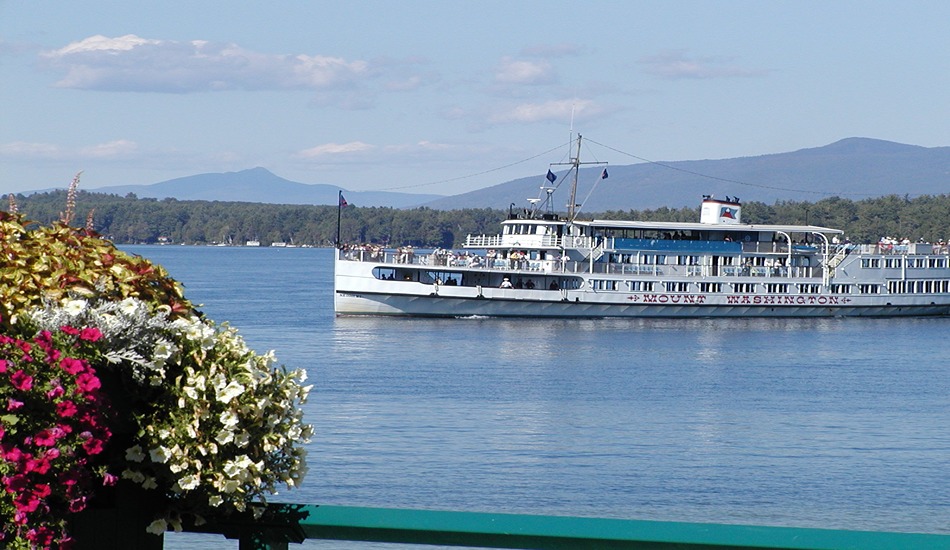From El Reno to Elk City, the Mother Road offers travelers both time-honored attractions and new experiences set to debut in time for its centennial in 2026
For glimpses of America the way it used to be, there’s no better way to travel than cruising down Route 66, one of the most famous highways in the world. They call it the Mother Road, a term coined by John Steinbeck in his novel The Grapes of Wrath. Another nickname: Main Street of America.
Though the 2,448-mile ribbon of roadway through eight states was replaced by high-speed interstates long ago, many portions remain open to traffic, delighting nostalgia lovers who want to experience the country before it became generic. Towns along the route are rolling out the red carpet, gussying up their downtowns and adding new attractions in anticipation of an influx of travelers in 2026, the 100th anniversary of Route 66.
Oklahoma has 432 drivable miles of Route 66, more than any other state. My recent five-day road trip started in northeastern Oklahoma and took me as far west as Elk City.
Exploring the western leg of Route 66 for two days, I got my fill of Mother Road lore with visits to historical sites, fun museums and homey diners. The western stretch begins just outside of Oklahoma City and extends to the Texas border.

Sid’s Diner in El Reno is famous for its onion burgers. (Photo credit: Oklahoma Tourism & Recreation)
Route 66 in El Reno: Onion Burgers and More
El Reno is the home of the onion burger, an Oklahoma specialty. A Depression-era creation concocted to bolster the size of the ground beef patty, it’s made by smashing thinly fried onions into the meat frying on the grill. The caramelized onions form a savory crust on the burger, enhancing its flavor and texture. The famous El Reno burger joints are Sid’s Diner, Johnnie’s Hamburgers & Coneys, Robert’s Grill and Jobe’s Country Boy Drive-In.
I had my onion burger at Sid’s, now in its third generation of family ownership. Adam Hall is following in the footsteps of his father, who still works there, and his grandfather, Sid, who opened up at a different location in 1974. The main room, with photos of local military heroes on the walls, has six tables and a counter with stools, and there’s a separate building next door. Both spaces seat 30, so they could handle a bus tour. Besides an onion burger and fries, I had the best-ever chocolate-peanut butter malt.
On the first Saturday in May, El Reno honors the onion burger with Burger Day festivities, which include a burger eating contest, classic car show, craft show, rides, games and live entertainment. The fire department cooks up the world’s largest onion burger—over 850 pounds.
Besides onion burgers, Jobe’s is known for its char burger, a quarter-pounder slathered with a rich hickory sauce that’s simmered for hours. A Route 66 favorite since 1958, Jobe’s has one of the Mother Road’s best signs, an icon worth a stop in itself.
Historical Crowd-Pleasers in El Reno, Oklahoma
El Reno’s Heritage Express Trolley, a reconditioned 1924 Philadelphia streetcar, offers narrated rides through downtown from the Canadian County Historical Museum. If the vehicle looks familiar, you may have seen its replica in the climactic last scene of Twisters, the 2024 storm chasers movie filmed in El Reno and elsewhere in Oklahoma, a state that is no stranger to tornadoes.
The museum, housed in a 1908 Rock Island Railroad station that saw passenger service until 1968, is a treasure chest cluttered with everything from train and Route 66 memorabilia to the original grill and a stool from Johnnie’s. Historic buildings on the grounds include the one-room Possum Hollow schoolhouse, two-story Hotel El Reno, a Mennonite church, an Indian Agency jail cell and General Philip Sheridan’s log cabin from Fort Reno. The Red Barn, with its magnificent antique bar, hosts group meals, sometimes with char burgers or onion burgers from a local eatery like Jobe’s or Sid’s.

This El Reno drive-in boasts one of the most iconic signs on all of Route 66. (Randy Mink Photo)
Historic Fort Reno Visitor Center & Museum, five miles west of Reno on old Route 66, sheds light on the U.S. Army cavalry post established in 1874 to quell Indian unrest in the region. Decommissioned in 1948, the fort is now used as a government agricultural research station. Museum-goers learn about the Buffalo Soldiers, a Black regiment so named by Native Americans for the color and texture of the men’s hair, which resembled the hair between the horns of a buffalo.
I was just as interested in exhibits on the fort’s days as a POW camp during World War II. Walking out to the POW cemetery, I saw headstones of German and Italian prisoners of war captured by Allied Forces in North Africa. The POW canteen was known as the “Biergarten,” and church services were offered in German. The camp provided courses in English and other subjects. Many prisoners earned wages working on private farms, and some kept in touch with farm families after the war.
Next door to the Fort Reno museum resides the museum of the United States Cavalry Association, whose collection of saddles, uniforms, horse tack and vintage photographs make the saga of the Army’s horse-mounted soldiers come alive.
El Reno’s newest attraction is The Filling Station, a restored Texaco gas station that just opened as a Route 66 visitor center. It features a rotating display of classic cars and a catchy mural. There will be bus parking across the street.
Remembering a Lady of Legend
Hydro is home to Lucille’s Service Station, an unusual two-story gas station dating from 1927. Supported by long tapered piers, the building’s upstairs living quarters were inhabited by Lucille and Carl Hamons and their children. Lucille, who died in 2000, operated the gas station/diner/motor court business for 59 years, working seven days a week. Her friendliness and generosity toward Route 66 travelers earned her the name “Mother of the Mother Road.” She claimed to serve the “coldest drinks in the state of Oklahoma.” The restored station is no longer in operation but has two vintage gas pumps and is worth a photo stop. The 1941 “Hamons Court” neon sign hangs in the Smithsonian’s National Museum of American History in Washington, D.C.
The town of Hydro has received a state grant for installing billboards and neon signage, rehabbing a Route 66 bridge that visitors can walk over and upgrading a nearly 100-year-old community building so that it can host group tours for catered meals. In addition, a new cow feeding experience will be available just west of Lucille’s Gas Station. At a ranch along Route 66, visitors will be able to ring a bell to call the cows and purchase feed from a vending machine to toss into the pasture.
In nearby Weatherford, I stayed at Lucille’s Hotel and ate at adjacent Lucille’s Road House, a complex named in honor of Lucille Hamons. The restaurant’s four rooms include a banquet room for groups and a gleaming retro diner done up in white and turquoise. Specializing in comfort food, the menu lists sandwiches like grilled Spam with American cheese and jalapeno bacon on grilled white bread. The choice of 16 sides ranges from hush puppies and fried green beans to onion rings and creamy white cheddar mac and cheese. I opted for the Ultimate Grilled Cheese with four cheeses—pepper jack, Swiss, cheddar and American—and jalapeno bacon. Best of all was the warm apple fried pie, a dream dessert drizzled in caramel sauce, dusted with cinnamon and served with two scoops of vanilla ice cream. The dining room, decorated 1950s style, sported Route 66 fabric booths, gas station paraphernalia and pictures of celebrities from way back when—folks like Marilyn Monroe, Elvis Presley, James Dean, Lucille Ball and Andy Griffith.

Stafford Air & Space Museum, Weatherford. (Randy Mink Photo)
A Route 66 Surprise in Western Oklahoma
A different kind of nostalgia, one mixed with space-age technology, surfaces at Weatherford’s Stafford Air & Space Museum, one of the nation’s leading aerospace and aviation museums. Located on Route 66 at I-40, the Smithsonian Affiliate is named for Lt. Gen. Thomas P. Stafford (1930-2024), a Weatherford native who became a pioneering astronaut. He piloted the Gemini VI, a spacecraft (on display) that made the first rendezvous in space with another orbiting craft. Stafford, the first astronaut to become a general and the first general to fly in space, also commanded the Apollo 10 mission to the moon in May 1969, the final full-dress rehearsal for mankind’s first lunar landing two months later. It’s remarkable that Stafford’s mother came to Oklahoma in a covered wagon and lived to see her only child fly to the moon.
As a boy growing up in Weatherford, the future astronaut witnessed planes in the sky that would use Route 66 as a navigational tool. An exhibit on the Route 66 connection is in the works.
Among the museum’s thousands of artifacts are Stafford’s Gemini and Apollo 10 space suits, rocket engines, a moon rock, a full-size, 2½-story replica of the Lunar Module and various aircraft, including the Lockheed F-117A Nighthawk Stealth Fighter (development for which Stafford was responsible). There’s also a flyable replica of the Wright Flyer, the Wright Brothers’ invention that in 1903 made the first successful flight of an engine-powered aircraft at Kitty Hawk, North Carolina. Some artifacts were autographed by Stafford in his later years.
The Stafford Air & Space Museum plans to complete a playground and rocket park by September 2025. A major expansion, expected to debut in time for the Route 66 Centennial, will see a new building with an orientation theater, new exhibits and an enlarged STEM center with space shuttle simulators and other interactive experiences.

The Oklahoma Route 66 Museum in Clinton is a treasure trove of Mother Road lore. (Randy Mink Photo)
Western Oklahoma Museums Brim with Route 66 Lore
The town of Clinton claims the largest museum on Route 66. Operated by the Oklahoma Historical Society, the first-rate Oklahoma Route 66 Museum covers all eight states threaded by the highway. With a soundtrack of classic tunes from each era, exhibits document the road’s history decade by decade. Push a button in the 1950s gallery and hear Elvis Presley belting out “Heartbreak Hotel.” The 1930s gallery sheds light on the Dust Bowl, an extended period of drought that drove thousands of Oklahomans to a more promising future westward via Route 66. The troubled times were described in Steinbeck’s The Grapes of Wrath, which referred to 66 as “the mother road, the road of flight.” A 20-minute movie is shown in the theater.
Gearing up for the Route 66 centennial, the Clinton museum expects to make several upgrades in the near future.
Just outside the museum’s main building, don’t miss the lovingly restored factory-built diner. Known as the Porter House Cafe, the boxy, five-stool eatery served Route 66 travelers in Shamrock, Texas from 1956 to 1964.
In Elk City, I enjoyed traipsing around the National Route 66 Museum Complex. Sitting in the back seat of a fire engine-red 1950s Ford, I watched clips from the horror/sci-fi movie Creature from the Black Lagoon before seeing more antique cars in exhibits highlighting each of the Route 66 states. A 1928 Ford truck piled with furniture and suitcases evokes scenes from the movie version of The Grapes of Wrath and even has a likeness of actor Henry Fonda, who starred in the story about a Depression-era family escaping poverty in the Midwest.

National Route 66 Museum Complex in Elk City. (Randy Mink Photo)
The Elk City complex has separate antique-filled museums devoted to local history, farm and ranch life, transportation and blacksmithing. On the grounds are historic buildings transplanted from other locations, among them a schoolhouse, church, barber shop, drug store, railroad depot and opera house. A giant kachina doll statue and a Route 66 shield sign at the entrance provide great photo ops.
The new Reedy Press book Route 66: The First 100 Years by acclaimed Route 66 ambassadors Jim Ross and Shellee Graham celebrates the road’s centennial with compelling stories on the road’s history and the people who served travelers. A perfect gift for Route 66 fans, the heavy, 196-page volume ($42) is loaded with photographs, many of them vintage. It makes you want to hop in the car and launch a road trip, a trip back in time to the real America.
By Randy Mink, Senior Editor
Lead photo – A 1940 Chevrolet at a motor court mock-up at the National Route 66 Museum Complex in Elk City, Oklahoma. (Randy Mink Photo)






